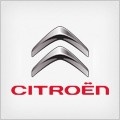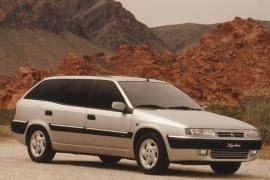
CITROEN Xantia Break
Generations Timeline, Specs and Pictures

The Citroen Xantia were good looking cars with fenomenal front end grip, safe handling, amazing suspension plus the ability to raise themselves.
The Xantia was produced from 1995 to 1998 and it came with 8 different engines, from a 1.8 liter to a 2.1 liter that produced from 75 Bhp to 150 Bhp. The interior was roomy and light due to it’s monocoque chassis, and it had a lot of luggage space. The Xantia break was excellent for large families with children. Despite it’s faulty clutch the Xantia was built to be reliable and do what U.K. people say high miles.

Citroen introduced the Xantia as a replacement for the BX in 1992 but waited for another two years before launching the station wagon version in 1994 as a 1995 model.
When Citroen launched the Xantia, the wedged shapes of the BX were not yet forgotten nor outdated. Yet, the new vehicle came with rounded edges and sloped lines. It was a different vehicle that became very popular. The station wagon was the version that attracted the families thanks to its comfortable ride and spacious trunk.
The ‘95 Xantia Break featured a very narrow front end with slim, rectangular headlights. The main grille was even thinner, with a single slat and the “double-chevron” badge placed in the middle. From its sides, the beltline was similar to the sedan version up to the rear doors, and then it raised in a sloped step towards the tailgate. The carmaker added a rhomboidal side window behind the rear doors as it did for its predecessor, the BX. Thus, it could keep most body panels from the sedan and changed only from C-pillars to the back.
Inside, Citroen didn’t want to go for a conservative design, and, unlike most carmakers, it didn’t feature a raised instrument cluster. That was in line with the rest of the dashboard and extended over the center stack. Also, it arranged the unessential gauges for the fuel and temperature on the sides of the instrument panel, leaving the speedometer and tachometer in the driver’s main visibility area. The station wagon featured a folding seatback in the back and an option for 60/40 split-folding. The car offered 512 liters (18.1 cu-ft) of space with the seats up, which could reach up to 1,690 liters (59.7) with the seatback folded down.























































